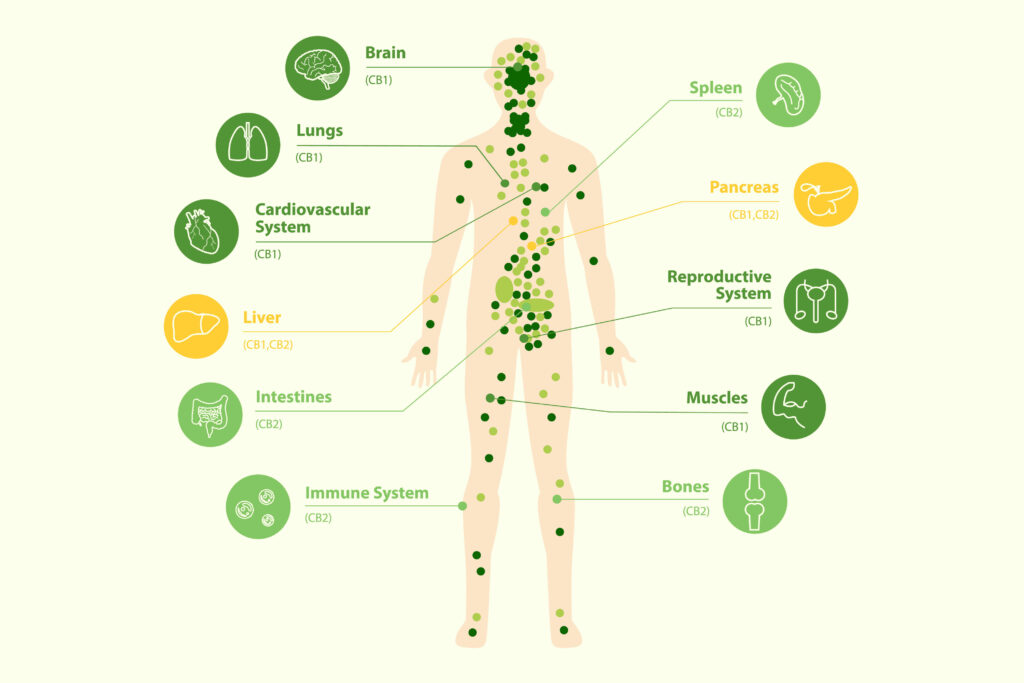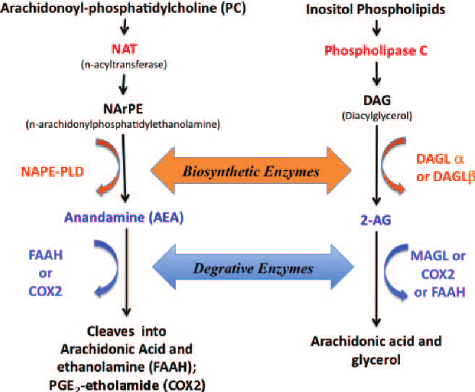
By Roddrick Taylor Certified Ganjier
In the previous 3 parts of our endocannabinoid series, we have explored the known receptors and cannabinoids of the endocannabinoid system. The endocannabinoid system is very complex. Doctors and scientists are constantly researching the endocannabinoid system to find all the ways it works to help the body with balance. We at Cannabisquery.com, collaborate with medical professionals and scientists to remain current with new proven information, regarding all things cannabinoids and how they help the human body maintain and or realign itself for homeostasis. In our fourth and final part we will now discuss as much as we know about some of the enzymes that play a role in the endocannabinoid system, as well as some of the coupling enzymes that have not been proven to be linked to the endocannabinoid system but are suspected to assist with regulation of our body.
The endocannabinoid system (ECS) primarily consists of receptors, endocannabinoids, and enzymes that are involved in regulating various physiological processes in the body. I’ll briefly explain the actual ECS enzymes and their functions:

- Fatty Acid Amide Hydrolase (FAAH):
- Function: FAAH is responsible for breaking down the endocannabinoid anandamide, which is a neurotransmitter that plays a role in pain, mood regulation, and inflammation.
- Monoacylglycerol Lipase (MAGL):
- Function: MAGL is an enzyme that degrades 2-arachidonoylglycerol (2-AG), another endocannabinoid. 2-AG is involved in regulating various physiological processes, including pain perception, appetite, and immune function.
- Diacylglycerol Lipase (DAGL):
- Function: DAGL is an enzyme that synthesizes 2-arachidonoylglycerol (2-AG), one of the endocannabinoids. It plays a role in the regulation of neurotransmission and synaptic plasticity.
- Phospholipase C (PLC):
- Function: PLC is not a direct part of the ECS, but it is an enzyme involved in the breakdown of certain lipids, which can indirectly affect endocannabinoid signaling by influencing the levels of lipid precursors.
There are other enzymes that have not been related to the endocannabinoid system but have been proven to assist with its regulation. Here are some we have found:
- Serum Albumin: This is a blood protein that primarily functions to transport various substances, including hormones, drugs, and fatty acids, in the bloodstream.
- Cholesterol: Cholesterol is a sterol molecule found in cell membranes and is essential for various physiological functions, but it does not directly participate in the ECS.
- Exosomes: These are small vesicles involved in cell-to-cell communication and can carry various molecules, but they are not enzymes of the ECS.
- Ceramides: Ceramides are a class of lipids involved in various cellular processes, such as cell signaling and maintaining the integrity of the skin barrier.
Please note that the endocannabinoid system is a complex system that plays a crucial role in maintaining homeostasis in the body, and it involves not only enzymes but also receptors (CB1 and CB2) and endocannabinoid molecules like anandamide and 2-AG. The enzymes mentioned above (FAAH, MAGL, and DAGL) are central to the regulation of endocannabinoid levels and signaling in the body.

